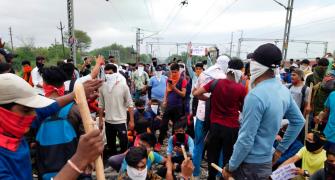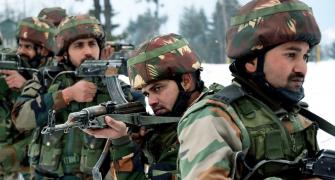Nobody bothered to articulate the upsides; instead, the four-year tour of duty and denial of life-long pensions got played up.
Job-seekers for government and related opportunities found that their future was at risk, points out Shreekant Sambrani.
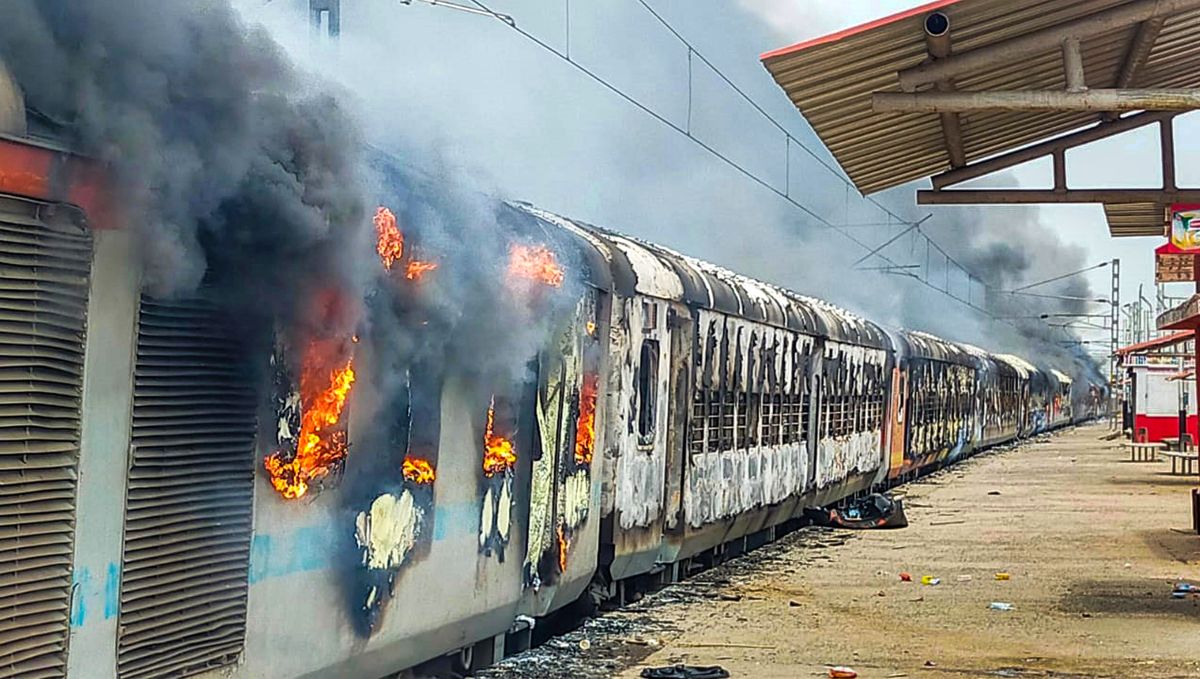
The Indian armed forces have long suffered from being boots heavy and guns and ammo.
The Kargil War in 1999 made it painfully clear that India was defending the highest position in the world with its soldiers not adequately protected against the frequent -30 C weather in terms of clothing, tents or rations.
George Fernandes as the then defence minister rectified the situation. He also made sure that there were proper aluminium coffins to transport the remains of the fallen brave hearts to their families.
It wasn't until 2015 that the soldiers were provided with adequate numbers of bullet-proof vests.
The Indian Air Force has been perpetually lacking several squadrons of even fighter jets, leave alone bombers and support aircraft.
The Indian Navy doesn't fare much better in terms of equipment either.
And what exists by way of defence equipment is often antiquated in terms of effectiveness.
Replacement or fresh supplies take 10 years or longer (the Rafale purchase now nearing completion was initiated in the aughties).
So, it isn't an exaggeration that the world's third largest defence force, nuclear-equipped, prepared to fight a two-frontier war, is essentially likely to do so in much the same way as World War I was fought more than a century ago.
The reason is both a lack of resources and a misallocation of available means.
The defence budget of $700 billion-$800 billion accounts for less than 3 per cent of the GDP.
And it can't be increased much without affecting other activities or budget deficit.
I will return to the resource crunch later.
The more immediate concern is the allocation of whatever is available.
Manpower (wages, allowances, perquisites, pensions) account for half of the defence budget.
The Modi government inflicted another wound by agreeing to a generous one-rank-one-pension scheme early on in its first term.
To be fair, it did not have much choice as the demand was pending for a long time and the retirees were getting increasingly agitational.
No government can afford to incur the wrath of the armed forces, especially the retirees.
Like all government wages and pensions, these are also indexed.
The Supreme Court has further mandated that OROP must be reviewed (read upwardly revised) every five years.
Pensions alone eat up 23 per cent of the defence budget.
The average age of a retiree, other ranks as well as officers, is 40.
Therefore, the average duration of the pension is 30 years (India's life expectancy is just short of 70).
Not only do the retirees receive an indexed pension, they also have generous health care and access to canteens, which supply everything a household needs, from dry rations to liquor to white goods at a substantially subsidised price to both serving and retired personnel.
These liabilities are unfunded, across the board, in all government departments, which means they come out of current expenditure.
That is why the funds situation as far as defence is concerned, is precarious, to put it mildly.
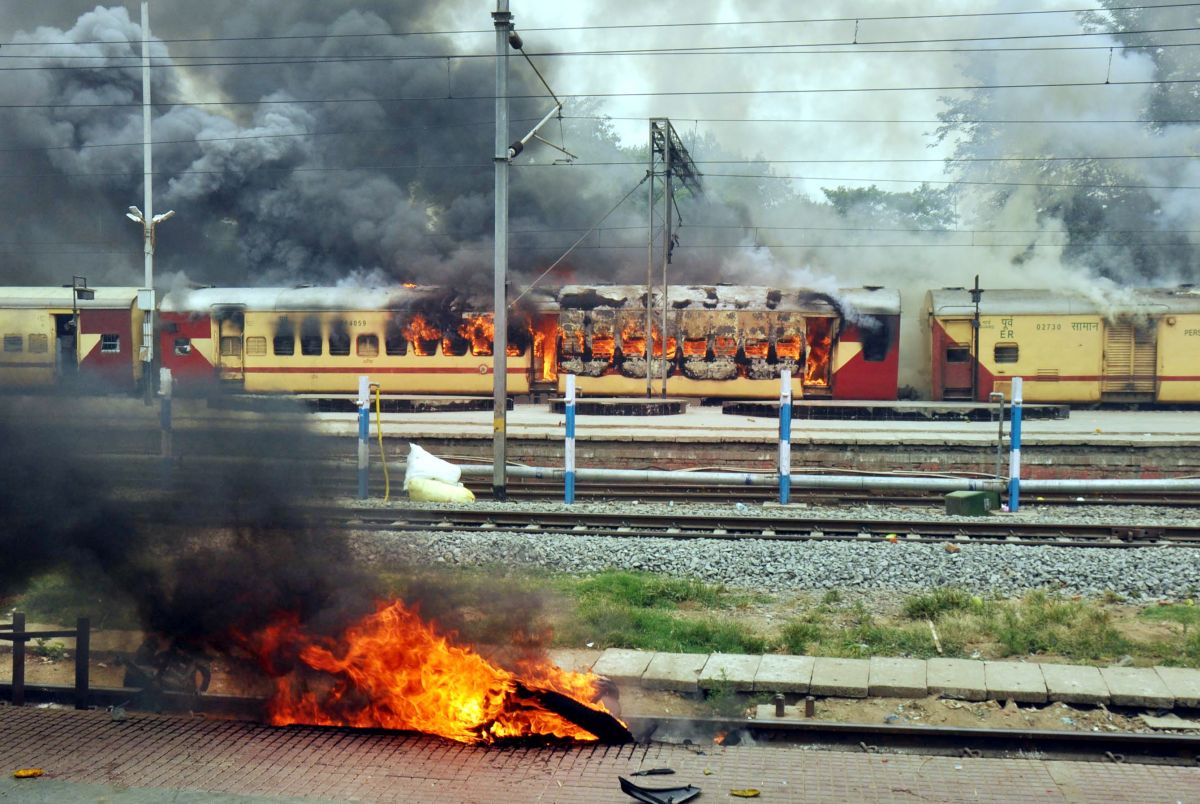
That is the principal reason for the Modi government to propose the Agniveer scheme.
All new recruits will follow this route, be inducted for four year tours of duty (during which they will receive a higher wage of ca Rs 30,000-Rs 40,000 per month as compared to normal recruitment at Rs 21,000 pm) and all other benefits such as health and canteen facilities.
On completion of four years, 25 per cent of them will be selected for absorption into the regular service and the rest will be demobbed with about Rs 1,100,000 as a lump-sum package of gratuity and commuted pension.
The demobbed will also be entitled to reservation in jobs with state police and paramilitary forces (there are a myriad of these, numbering over a dozen) and other central government and public sector jobs.
They will also get an equivalence certificate for completing higher secondary education (12th grade), which would be useful if they want to enter tertiary education institutions.
The defence forces spokespersons say that they are constantly striving to make the scheme more attractive to entrants but will not withdraw it in any case.
The Indian Army has already issued a notification of starting the process in July, to be completed by the end of December.
The Indian Air Force and Indian Navy will follow suit shortly.
That is just about all that we know about the Agniveers and their likely future.
This will obviously reduce the pension burden, but after a time lag.
Those who joined in 2019, the last year when regular recruitment took place, will be entitled to all benefits.
So essentially, pension savings will start showing only by 2034.
Some calculations done by a think tank claim that the present value of such savings when discounted at the rate of inflation (ca 6-7 per cent pa) would be Rs 34,000 crore (Rs 340 billion), not a small sum.
More importantly, the age profile of the armed forces will become younger.
The annual addition will be 11,500 or less, which will result in an overall reduction of strength.
The armed forces would thus be leaner and meaner, it is hoped.
The savings and a gradual increase in defence spending will enable the replacement of old weaponry and addition of more modern munitions in a phased manner.
The resource constraint will still remain, but its sting will be a little eased.
That is all on the upside. Critics, including some retired officers, say that four years is too short a tour of duty to fully train personnel (but they overlook the fact that training is not a one-off but a continuous activity).
They also say that the savings will permit equipment modernisation only to a small extent.
There is no easy way to bring it about except increasing the defence budget allocation.
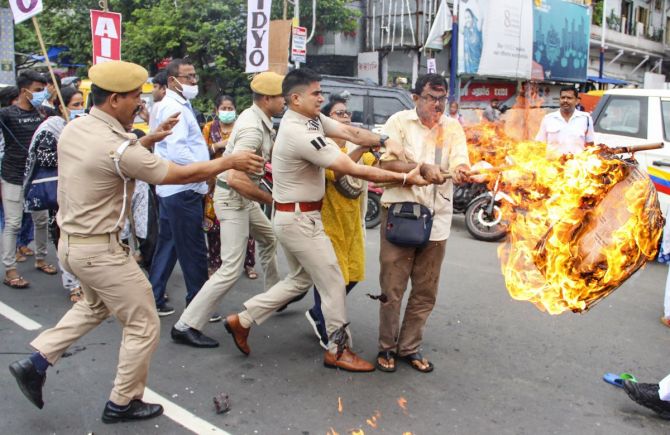
Two factors stand out: One, the bloated personnel budget needs to be trimmed and two, the defence force structure needs fundamental reform.
The Agniveer scheme is being touted by its supporters as being a major step in helping achieve both these desirable outcomes. But that is in the future.
We have had a long history of many well-intentioned plans and projects losing their way and going on to becoming duds.
Why are some of the likely target audience demonstrating? Mostly because the government sprang it as a surprise.
Nobody bothered to articulate the upsides; instead, the four-year tour of duty and denial of life-long pensions got played up.
Job-seekers for government and related opportunities found that their future was at risk.
In places like Bihar and UP, where thousands of graduates and post-graduates apply for government lowly peon's jobs, entering the military is a greatly preferred option for young job-seekers, especially in view of the life-long stream of benefits on offer.
It is almost axiomatic that such shock therapy produces a counter reaction, at least to start with.
The government record is none too spectacular on previous such measures: Demonetisation, lock-downs, farm laws and so on.
But then there is no guarantee that a gradual introduction after preparing the ground would have worked better.
The relatively less educated young people have many hotheads who become tinder in the hands of those bent upon stirring trouble on any and all pretexts.
The SP in UP, the RJD in Bihar, the TMC in West Bengal, the TRS in Telangana and the DMK in Tamil Nadu are no fans of the Modi government and would have found the Agniveer scheme a godsend to stir up trouble.
History tells us that winning elections takes patience and enormous backing of people; street riots give you national media presence and nuisance value, albeit for a short while, with a fraction of that effort.
Not much joining of dots is needed to see the pattern (the same was the case with l'affaire Nupur Sharma).
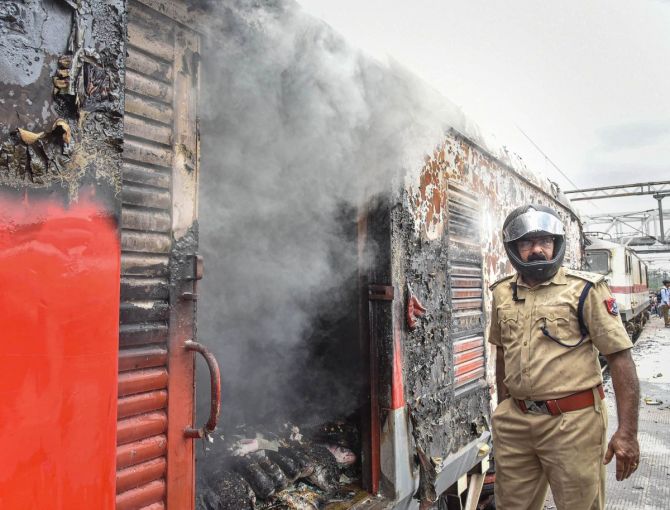
Finally, why trains? They are the most easily identifiable, visible and widespread symbols of government.
They are also extremely vulnerable, as protecting each train would need humongous manpower.
This has been the experience of many past demonstrations.
Therefore, rail roko and burning trains are the commonest forms of anti-government protests.
Such is the state of affairs in India now. One passing thought: There was all over a quietude during the two months of IPL.
That mass opiate drugged us all and our pent-up frustration with harsher realities of life is now being manifest in various forms.
That's probably why Agnipath scorches trains.
PS: Methinks the mandarins and the generals, who planned the programme, must have had some preternatural idea of the reaction to it; why else would agni figure in the nomenclature so prominently?
Rahul Gandhi termed Agnipath as the 'no-rank-no pension' scheme. That is quite accurate, besides being pithy. Truth sometimes emerges from the most unlikely babe's mouth, albeit entirely inadvertently!
Feature Presentation: Aslam Hunani/Rediff.com


